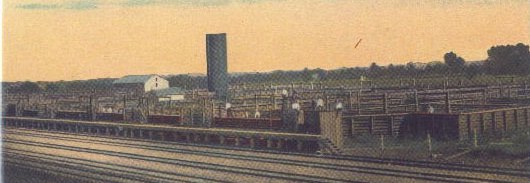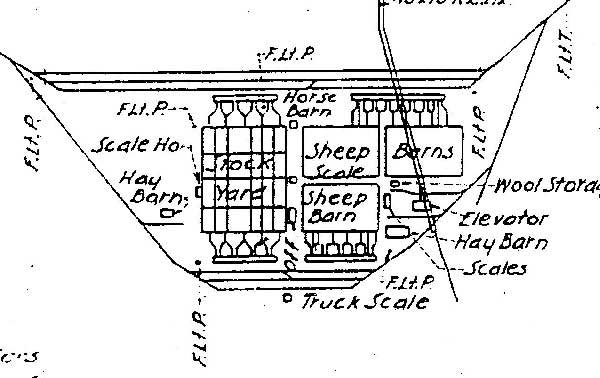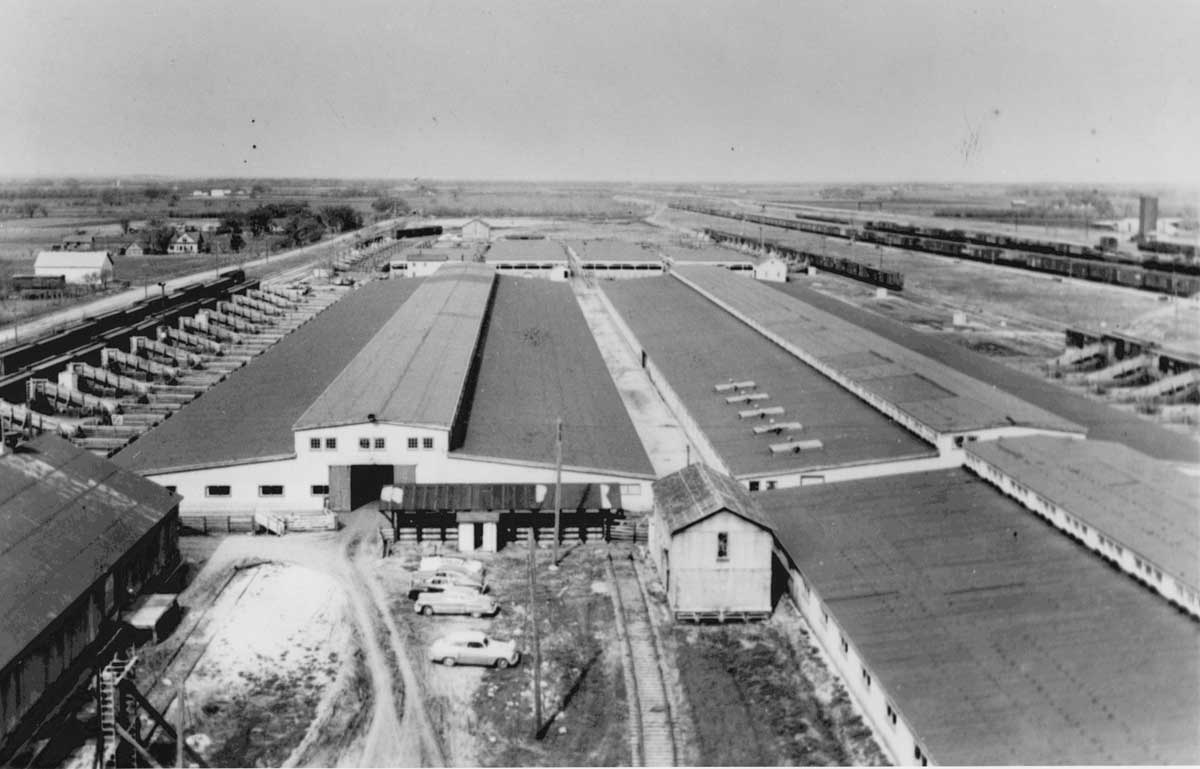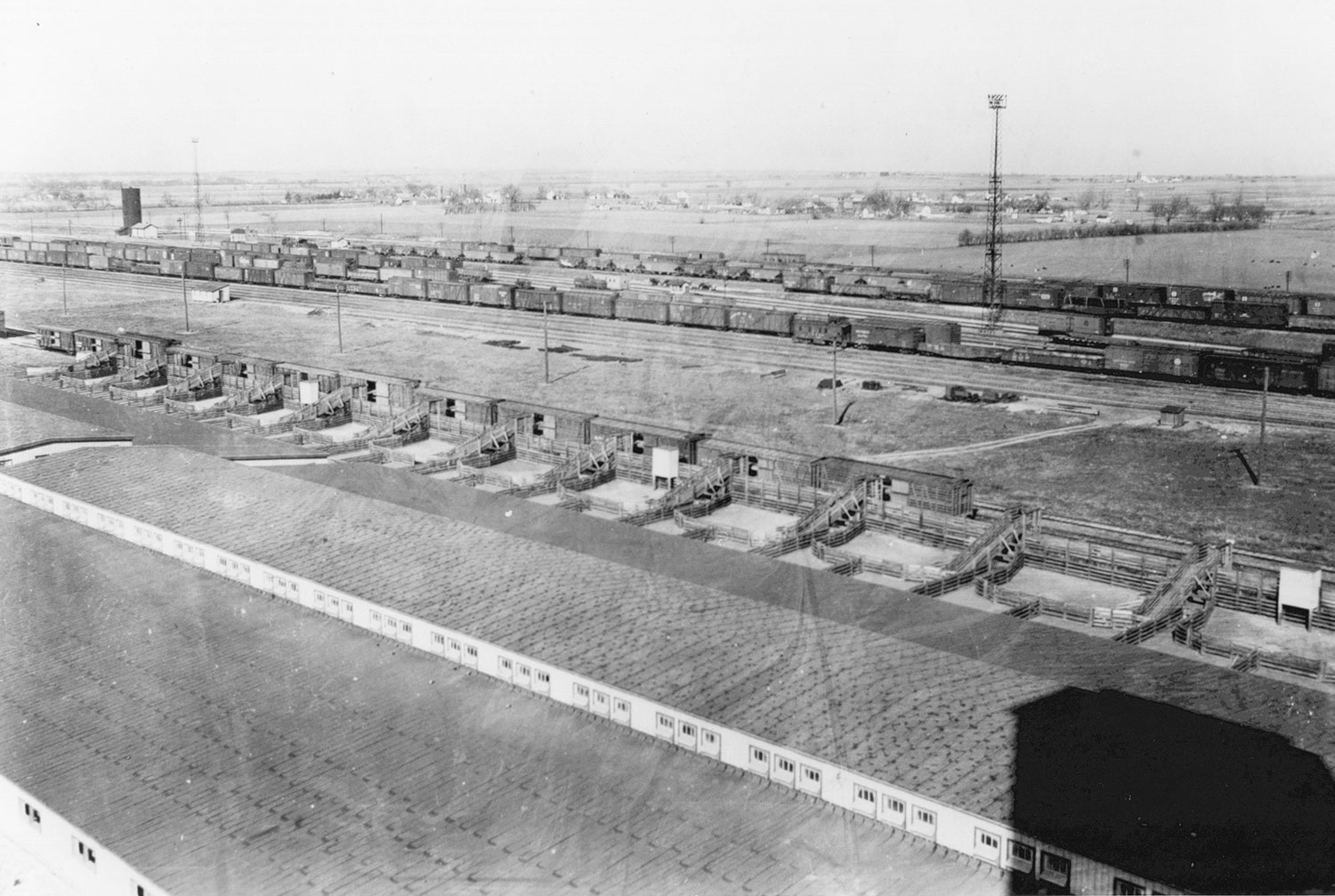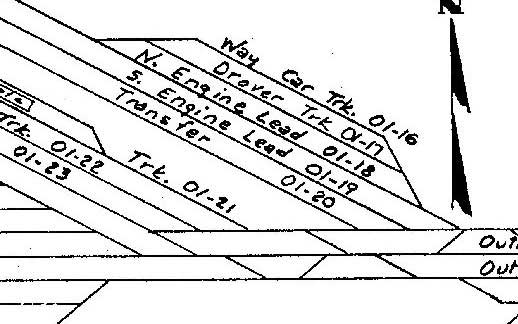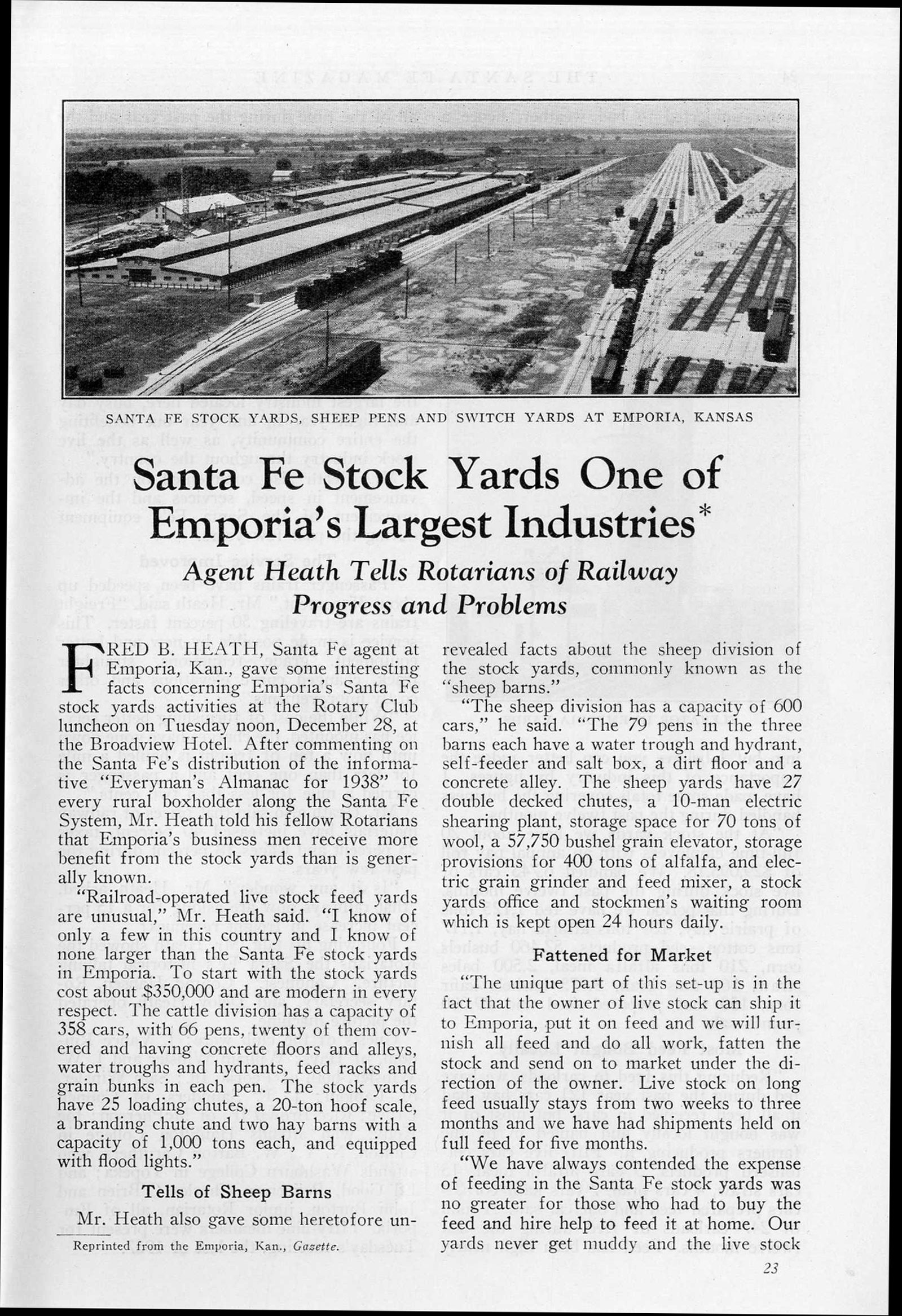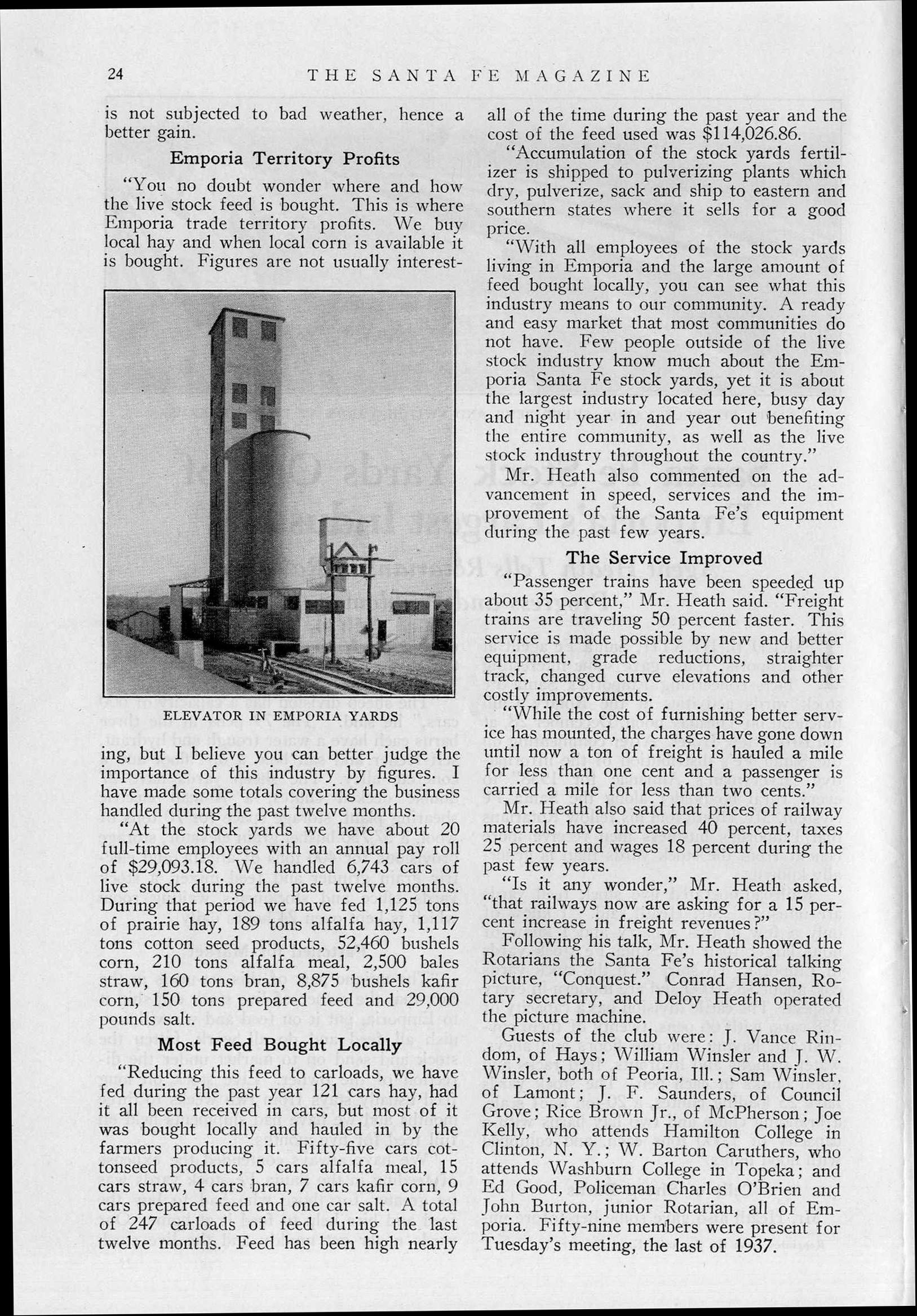Emporia: Stock Yards |
|
Emporia was a major feeding station on the ATSF. Livestock shipped by rail had to be unloaded, fed, and exercised every 28 hours by federal law, but that could be extended to 36 hours with a waiver. Emporia was set up for this purpose. A large number of cars heading east would be pulled from their trains at Emporia and set out at the stockyard to allow the stock to rest before continuing on another freight. Two major stock yards have been built by the Santa Fe in Emporia. The original yard was replaced in 1928. The "new" roundhouse and locomotive service tracks were built where the former stock yard and car shops had been located. The resulting new stock yard was one of the most modern on the system. The Santa Fe had 7500 stock cars in 1948 and handled nearly 89,000 carloads of stock that year, down from 127,000 in 1946. Carloads remained healthy until 1959 when it began a steady decline. Its facilities in the southwest side of the yard at one time included the capacity of 175 stock cars. It included 66 pens, 20 covered, concrete floors and alleys, water trough and hydrants, feed racks in each pen, 25 chutes, 25 pockets, 20 ton hoof scale, track chute, and had flood lights (F. Lt. P.) for daily 24 hour operation. There were also 2 hay barns with capacity of 1000 tons, offices, and stockman's room (The Warbonnet, 7:3). There were car loading chutes on each side of the yard, with three parallel tracks on each side.
Emporia sheep yards had capacity for 200 double deck or 294 single deck cars. It boasted 80 pens, 3 barns with water troughts, hydrants, self-feeders, and salt boxes, double deck chutes, 29 double deck pockets, 10-man electric sheep shearing plant, 70-ton wool storage, 400-ton alfalfa storage, 57,750 bushel grain elevator, electric grain grinder and feed mixer, and had concrete alleys, dirt floors, and a 20-ton hoof scale. When Jack Delano visited in March, 1943, he reported 40,000 sheep in residence. The two tracks closest to the pens were used for loading and unloading while the outside tracks was for cleaning and disinfecting the cars for reuse. Up to four inches of sand would be used to cover the floor of these cars and hay was added to cars hauling hogs. This soiled cover had to be removed and discarded and new fill added. Caswell gons were regulars in sand service. In the middle of the yard by the waycar track was a drover track. Modelers of Emporia during this era will want to include drover's cars in their collection. Also until around 1970, a specific waycar (caboose) was assigned to a specific conductor. "The Santa Fe had chain gangs not pools. Every conductor in the chain gang had a waycar assigned to him. These needed to be switch out at every terminal. The Emporia yard was protected by Eastern Division switchmen. They were kept busy switching out the way cars from the Middle and Eastern Div crews.Therefore not only would trains leave their stock cars in Emporia, but they would change waycars as they changed crews." Gary Rich
Eastern Division waycars were kept in this location. Middle Division cars were kept on tracks 18-19 of the westbound yard. Drovers cars were used if there were more than six caretakers accompanying the stock. It is believed that the drovers cars were at the end of the train in front of the caboose. An exception were those used in 75-76 for Superior, NE; they were at the headend. The sheep barns burned to the ground in 1960 leaving only the stock pens. Rail transport of stock on the Santa Fe ceased February 27, 1974. The grain elevator which once served the yard was leased to Bluestem Grain by 1977 and then to Emporia Elevator by 1983. Click the photos for the text of a speech given December 28, 1937, Click here for pages on stock operations. See Frank Ellington, et. al. Stock cars of the Santa Fe Railway, and Dean Hale, Santa Fe System Standards, Vol. 1, for more information and plans for Santa Fe stockyards. Ellington's Caboose Cars of the Santa Fe Railway, and John B. McCall's Coach, Cabbage & Caboose contain photos and drawings of Drover's cars. An article in The Warbonnet, 7:3, has useful details on ATSF stock movements. |








